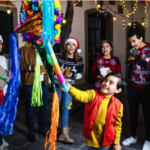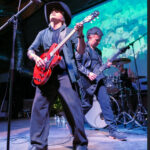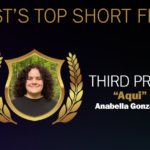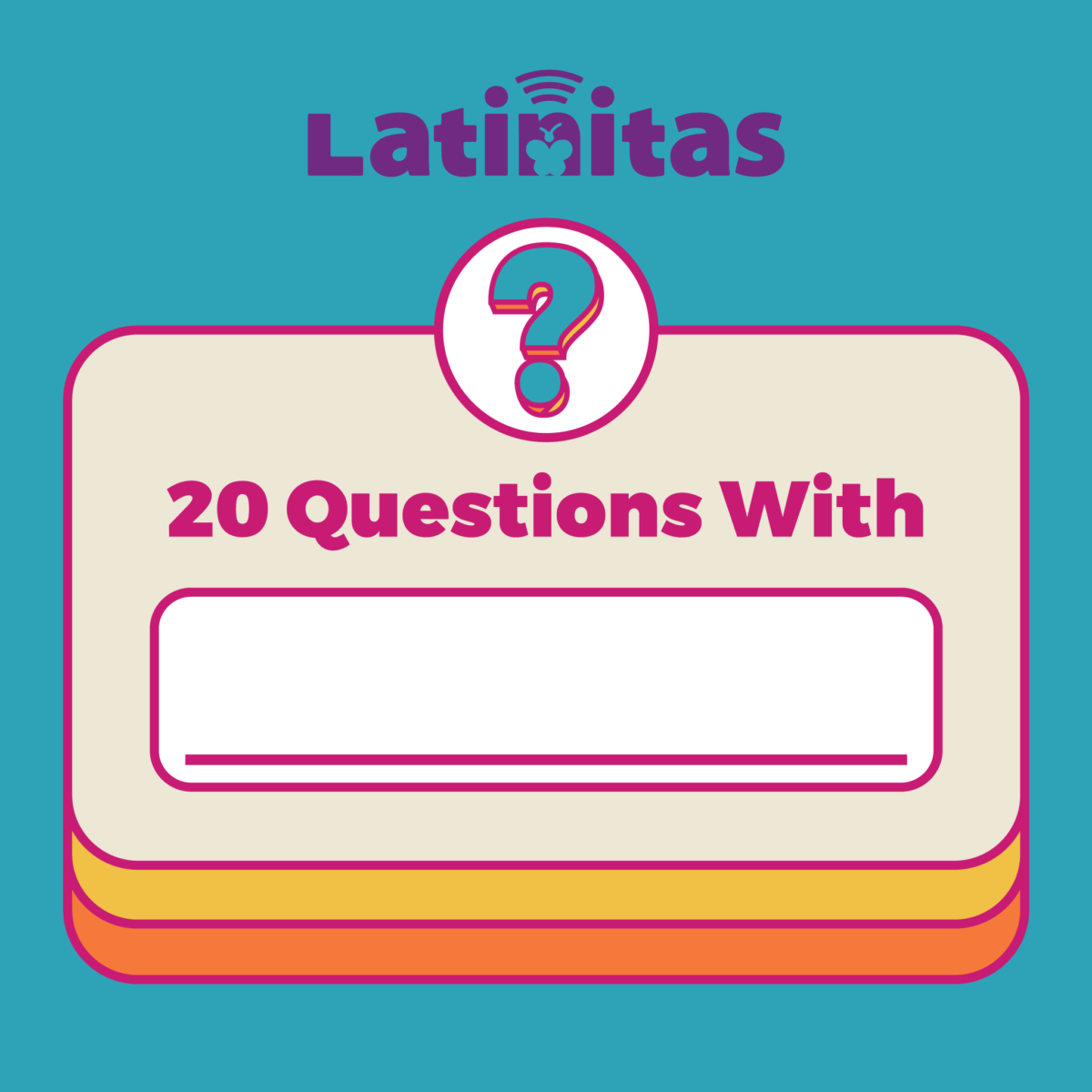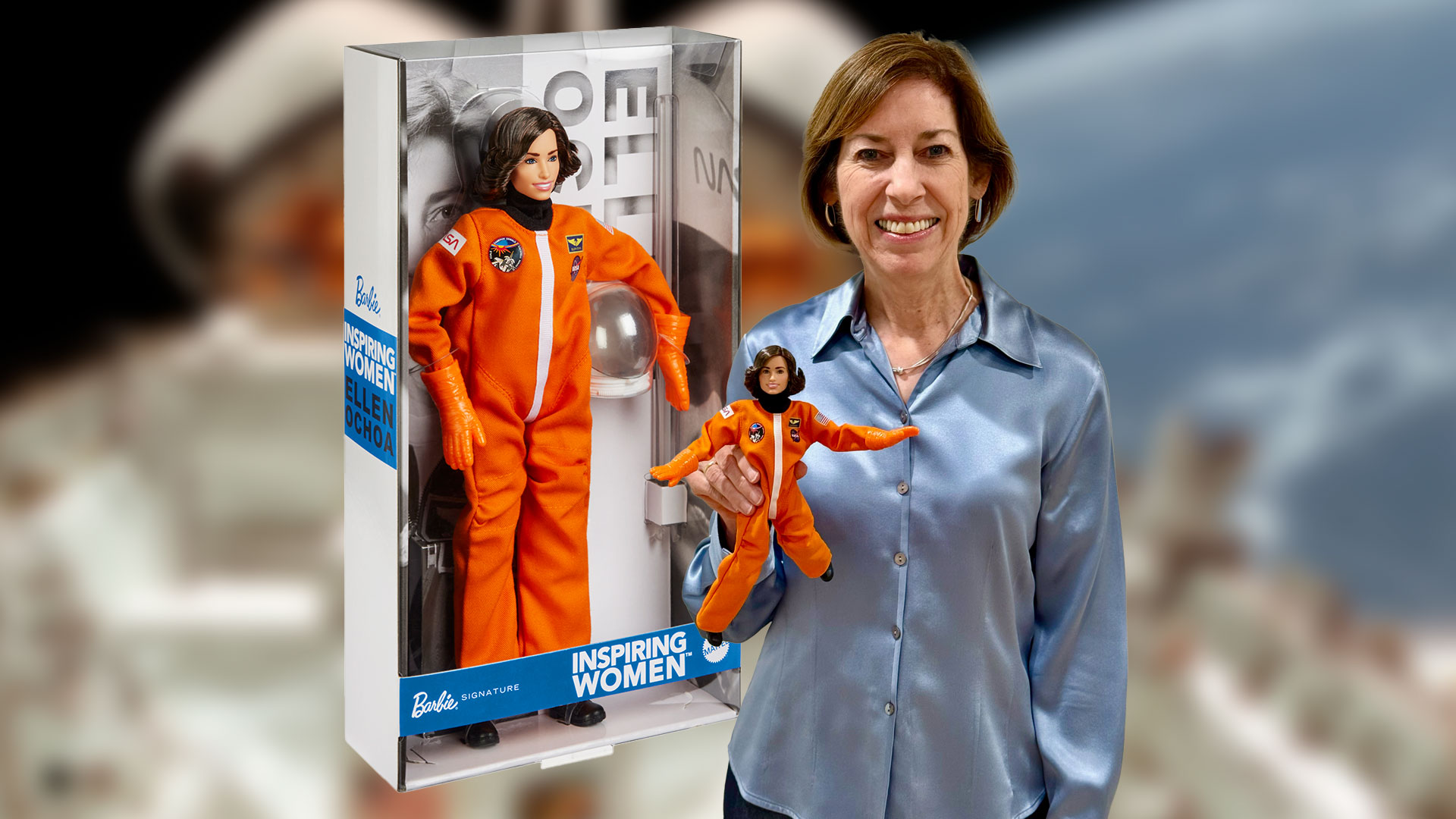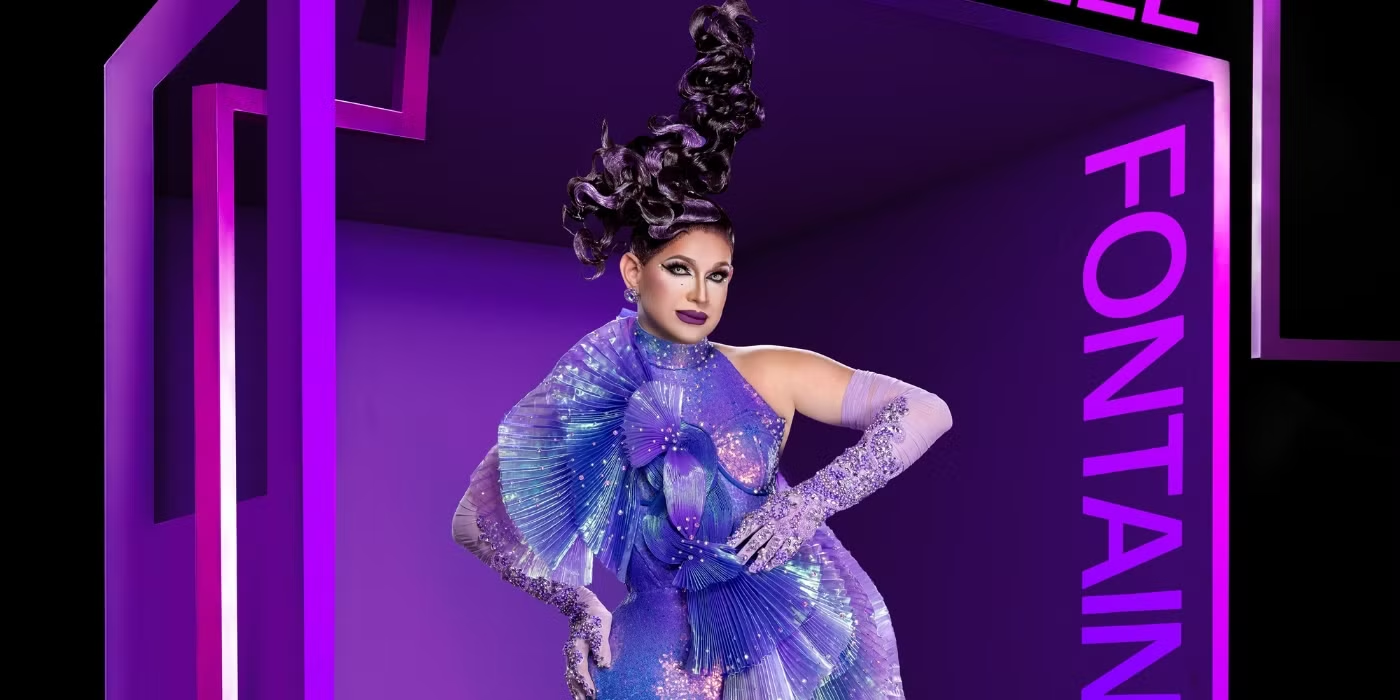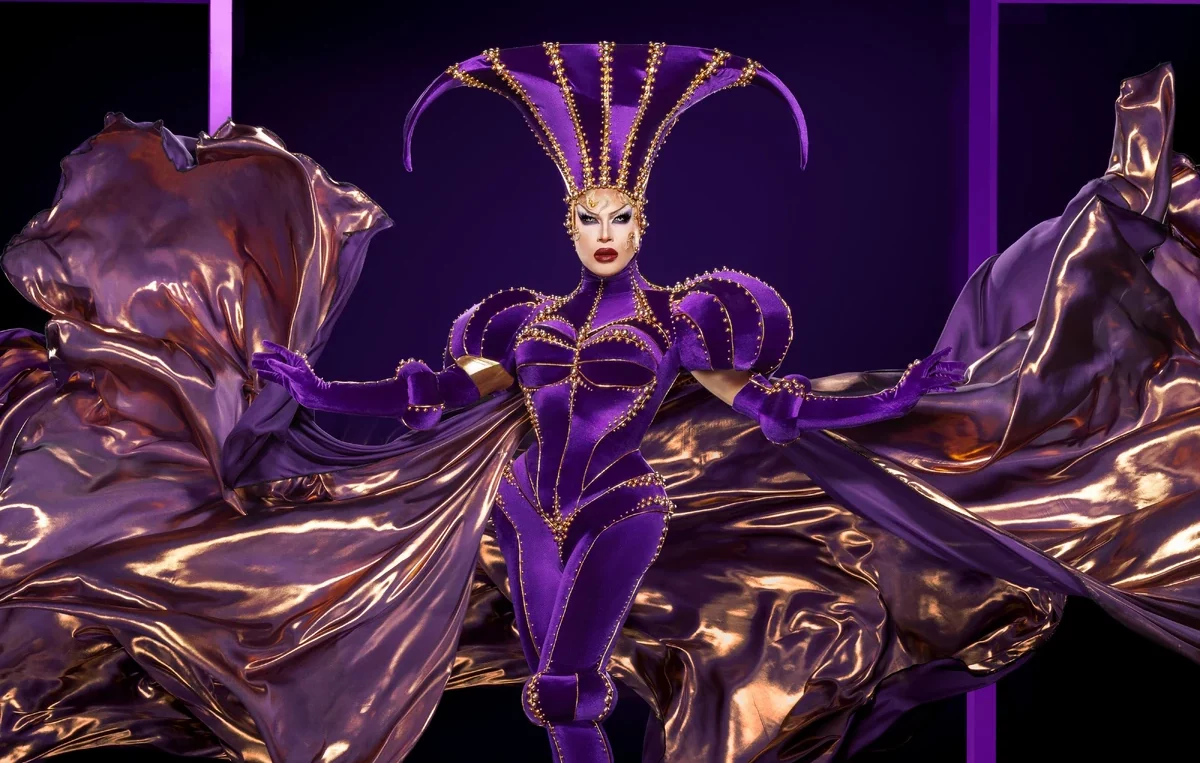Hosted by Manoela Torres
Editor’s Note: This is a transcription of Latinitas Magazine’s SoundCloud podcast “20 Questions With,” where we invite bold and creative individuals to discuss their experiences and background. Listen along by clicking the link!
Hola Chicas! Welcome to 20 Questions With, a podcast in conjunction with Latinitas Magazine. Latinitas Magazine is a strong voice for Latina and POC youth, which is why the hosts of 20 Questions With are all young Latinas who are looking to gain experience in innovative and creative fields just like you.
In each episode, you’ll hear from striking individuals who are inspiring today’s youth with their passion, motivation and grit.
Today, join volunteer writer Ella Torres while she sits down and ask 20 Questions With two striking individuals Alaina Lavoie and Adriana White.
Before we get started, here’s what you should know about today’s guest.
Alaina is an award-winning editor, communications manager, writing coach and journalist. Alaina is currently the Communications Manager for a literary nonprofit called We Need Diverse Books.
According to Adriana’s website, they are an autistic librarian and former special education teacher. Adriana is passionate about creating accessible schools and libraries for students with disabilities, especially autism. Adriana is also passionate about promoting children’s books that feature autistic characters.
Alaina and Adriana gave us insightful and impactful information about being autistic. With that said, we’ve divided this episode into two parts. To listen to part one, go ahead and keep listening and listen in as Ella leads the first 10 questions. Part Two will feature questions 11 through 20 from Carlota.
We’re so excited to be talking to Alaina and Adriana today. So let’s get started with the show.
ELLA: Hey, everyone. Thanks for joining us on this episode of 20 Questions With. Thank you for joining us today, Alaina and Adriana.
ALAINA: Thank you for having us.
ADRIANA: Yeah.
ELLA: Yeah, it’s my pleasure. So I will just start with the questions. Could you walk us through your career and how you viewed your platforms and environments to speak about autistic stories and diversity?
ALAINA: Yeah, thank you for asking. I work as the communications manager of the nonprofit We Need Diverse Books. In addition to that, I also teach courses as an adjunct professor at Emerson College, primarily in their MFA program on personal marketing for authors. And I also do some freelance journalism, public speaking, workshops, webinars, and things of that nature.
And I primarily focus on LGBTQ and disability representation in the media, including books, movies, films, music, etc.. I’ve always wanted to focus on that. I’ve always had an interest in the way that people are represented. I believe that when you’re creating a career where you’re investigating how marginalized groups are represented in media, it’s so important to be a part of that community. And in my work, I do also advocate for other communities, but I am a personal expert and have lived experience as an LGBTQ person and as a disabled and autistic person. So that is where I’ve focused most of my energy and research.
ADRIANA: And, similarly, I’m not a professor, but I am a teacher. I started my career as a special education teacher and then became a librarian. And for me, it was a lot about storytelling. I loved movies and books growing up, and I loved losing myself in stories. And it was something I was passionate about and wanted to talk to other people about. So when I became a librarian, I discovered the idea of Own Voices books, a concept created by an autistic author named Corinne Duyvis. And it’s just this idea that books that written by people who have personal lived experiences with things, their stories tend to be more real and more interesting. And we should support them as much as we can, especially when there are marginalized groups.
While someone can write well, outside their experience, I feel like there’s a little something extra you get when someone’s had that real-life perspective on things. So that’s what I’ve been trying to talk about. I write about it. I do conferences and professional developments for librarians and teachers, where I talk about diverse books and autism in books and make our schools and libraries more autistic-friendly.
ELLA: So could you walk us through your diagnosis story? I bet it is a fascinating conversation.
ALAINA: Mine is actually pretty boring. I was diagnosed when I was a kid. I might have been between the ages of six and eight, and I was referred to diagnosis. Thanks to my education in the public schools in Malden, Massachusetts, my teachers and parents recognized that I was having trouble with some aspects of learning in a traditional classroom. And I went through all of the testings as a kid and was diagnosed pretty easily.
But I think that I have a lot of the Hallmark symptoms that people see with autistic kids. Research shows us that people who are not cis men and cis boys are less likely to get diagnosed. And the same is true for people of color. Often, it seems like that’s because people don’t follow the stereotype of what we expect from an autistic kid. But I very much did follow that stereotype. I couldn’t sit still. I was constantly self-stimulating or stimming. I had difficulty in a learning environment, obvious difficulties with social interaction. Many things that tend to get missed in girls and non-binary people and people of color are not missed for me, but they are overlooked for many others.
ADRIANA: Yeah, definitely. I was going to chime in and say that I had the opposite experience. I was not diagnosed until I was in my 30s. And so for me, it was this interesting experience where I grew up in this household that was half Mexican, half Puerto Rican. And my family just kind of accepted that I was weird.
And they didn’t think that there’s anything wrong with me, per se. They’re just like, ‘Oh, they’re weird.’ Or ‘She’s a little different.’ And this is something that I have seen a lot from Hispanic families. A lot of Mexican and Puerto Rican families I’ve spoken to have seen something similar, where they don’t get diagnosed, because they have a weird uncle who’s just like them, or they have a cousin who’s just like them, and it kind of gets accepted that we’re all a little strange.
And so for me, it took a long time for my family. I realized that the experiences I was having were not typical. And it wasn’t until I went off to college, I had this terrible burnout and had to come home and got misdiagnosed with a few different things before we figured out that it was actually autism and anxiety that was causing a lot of issues for me. And so I think it was me becoming a special education teacher and teaching a classroom that had three Mexican triplet girls as students that made me realize like, these kids are just like me. This is who I was as a kid. And so that’s kind of why I feel so inspired to talk about this stuff. Because for me, there were years of suffering that I didn’t have to go through if my parents had known that autism was a thing. And so I kind of want to help as many other families as I can, so they don’t have to go through this same confusion and concern about their kids.
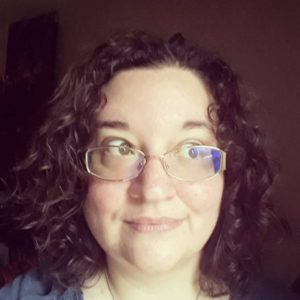
ELLA: Yes, absolutely. Thank you for sharing your stories. Going back to the subject of the marginalized groups and misdiagnosis with autism. Why do you think autism diagnosis rates are low for marginalized groups such as women and girls, nonbinary folks and people of color?
ALAINA: I’m going to stick mostly to talking about women, girls, and nonbinary folks because I am not a person of color. But I think it’s so often low for people in marginalized groups because we’ve continuously fed this idea of what an autistic person looks like, especially through the media. And that person is primarily a cisgender, straight white boy, often middle class or upper-middle-class, and his family usually doesn’t struggle with money, and he’s very socially awkward. He has very obvious special interests that fall into niche categories like trains or science or math. And we just continue to perpetuate this stereotype of what an autistic person looks like. They lack empathy, they have trouble with eye contact, they say things that people don’t understand, they might come across as rude without even knowing that they’re rude.
That’s what we think of when we think of an autistic person. And I believe that the reason that rates are low for marginalized groups is that we are continually looking for this one thing. People are always surprised to find out that I’m autistic and highly empathetic and that I’m an extrovert. And I actually really need to be around people to feel energized. And that’s just not what we see, you know, in the media. Anytime somebody falls outside of that perception, you know, it makes it harder for them to get diagnosed. And also, if you’re marginalized, you might just be focused on other things. I grew up poor, with low-income parents. So it’s surprising that I did get diagnosed because my family was focused so much on making sure that we could survive and that we had our basic needs met. And I feel like many families are in a similar position; they might be dealing with something else. And therefore, an autism diagnosis just gets hidden.
If there’s something else that people see first, like English is your second language, they see that you’re an immigrant, they see that you have same-sex or LGBTQ parents. People are so focused on that they don’t imagine that someone could also have an autistic child or be autistic themselves.
ADRIANA: To speak on the other side of that with people of color, that’s something that I talk about in my presentations on autism. How for families, especially immigrant families, you have all of these barriers. It could be a language barrier or a cultural barrier. There could be this fear, where they don’t want to go to the doctor because someone in their family might be undocumented, and there’s that fear of being deported. For my family, there’s a lot of awkwardness about mental health issues. And they don’t want to talk about that. And you get a lot of old-school relatives who will still say things like, ‘Oh, so and so about cancer, because it’s a punishment from God.’ So I think we’re kind of up against a lot of these ideas that are making it difficult for us to talk openly and honestly about things like autism and the way that our brains work because there’s just so much other stuff that we’re dealing with that can cause issues and prevent us from getting diagnosed.
ELLA: Yes, absolutely. Thank you for shining a light on this subject. What do you think is the biggest challenge or barrier that prevents more autism-friendly workplaces in
schools?
ALAINA: I think that there are a lot of challenges. But I genuinely believe the biggest and most prevalent challenge is just a lack of understanding and empathy. For autistic people, I believe that it kind of goes back to that media representation that people only see autistic people through a very thin lens. It’s either an autistic person they perceive as quote-unquote, low functioning, and many autistic people have spoken out about why we don’t generally agree with functioning labels. But this is how the media presents us. And a low-functioning person is someone to pity and feel bad for. That person cannot do things that we perceive as important, or people see an autistic person as quote-unquote, high functioning. Often, the blame is placed on the autistic person for anything they might see as out of the ordinary. It goes back to that stereotype of somebody who says things a little bit out of turn and might have trouble with social interactions and conversation. We just assume the autistic person is inspiring for being able to push through autism and succeed despite everything. Or they should really just get over it. Or, for lack of a better term, they should get over their struggles with self-stimulating or eye contact, or facial recognition. The blame is on the autistic person for struggling with anything that they might struggle with. So I think that that’s something that provides a barrier because people don’t think of accessibility as being something that’s important for autistic folks.
ADRIANA: To kind of extend on that a little bit from the perspective of someone who works in like schools. I would have to say the issue on the training that people get on autism can be outdated, or it could be designed by people who don’t know a lot of autistic adults. So you end up with teachers and education professionals who get trained to believe just these outdated and incorrect ideas about autism. I think that is a big hurdle that we need to work on. It is also kind of just raising awareness of how prevalent Autism is because I see many teachers and other people who think I don’t have to worry about that. We should be aware that you probably do have an autistic kid in your class. You just don’t know it because they could be undiagnosed. Maybe they don’t want to disclose it. And the same is true for workplaces as well. So it’s something to consider and kind of the attitudes that people are taught about autism.

ELLA: Definitely. Absolutely. And what are some of the benefits employers or workplaces can have by having an inclusive workspace towards the autism community?
ALAINA: Beyond just the obvious, I would say that you should make your workplace and environments inclusive to everybody and welcoming to everybody. In general, inclusivity and accessibility just tend to have benefits for everyone. We think of inclusivity and accessibility as being something that only benefits the person who needs it. So you think a place that’s wheelchair accessible, that’s going to help wheelchair users.
But a lot of the time, it benefits other people to a curb. It benefits people with strollers or large rolling bags that they’re carrying. It benefits people who are pushing their babies or even their dogs and cats in strollers. All of these things we create to be inclusive and accessible have benefits for others. You know, for me, for example, as an autistic person, I need to work primarily from home. Before 2020, that was seen as something unique. It was either your workplace happened to be cool enough to let you work from home, or you got it as an accommodation for a disability. And now, in the last year, many people have seen just how useful working from home can be. Granted, not everyone likes it. Many people are itching to get back. But I’ve got friends and family members who had never worked from home before who are now loving it. And now they’re seeing where I’m coming from on cutting down commuting time and commuting costs and being able to make whatever lunch you want at whatever time you want to eat it. So I think that, in general, being inclusive just creates a workspace that’s better for everybody. Somebody doesn’t have to request accommodation to get what they need, because it’s already being offered to everyone.
ADRIANA: Yeah, and I would add that it’s such a small thing, a lot of the stuff that we can do to make workplaces more autism-friendly, like getting rid of fluorescent lights because everyone hates fluorescent lights. And all of these small things can have such a big impact. And it’s important, I think, for us to let people know to make a small change, but they can have such a big benefit because autistic people can usually see things differently. After all, their brains are wired a little different from usual. So they can look at problems from a different angle or come up with different solutions. And you know, it’s kind of sad to look at the statistics and see, like 85 percent of college-educated autistic adults are unemployed. Unemployment is a big, big problem for autistic adults. And I think that if workplaces are told that these are small things you can do that will help everybody as Alaina said. You will benefit from having these different perspectives on your team. I think that would help get more people with autism working, which many people want to be doing. They want to be working and contributing to the world.
ELLA: While many focus on the disadvantages and hardships of autism, where do you think autism has helped your life?
ALAINA: Being autistic can be such a wonderful thing. And we can bring so many different perspectives to a problem. And I would say that, in general, in my personal opinion, being autistic brings me more joy than it does hardship. A vast majority of barriers I face are because of society and not how my brain works. If society were to change and accommodate those things, it wouldn’t be a problem for me. And I find that autistic brings me quite a lot of joy. I have a lot of special interests that I’ve been developing since I was a kid. I continue to grow more special interests. They bring me happiness, and I can’t understate just how wonderful it is as an autistic person to engage with something that brings you joy because the way we feel joy is such an all-body somatic experience. It brings me the same kind of joy that you might feel on one of the most important days of your life, whether that’s a graduation, a wedding day, some sort of career accomplishments. I feel that way sometimes just finding a perfectly ripe avocado or reading a book about the Victorian era with engaging characters. Being autistic brings vibrancy and joy to life as much as people talk about the sensory channels, like fluorescent lights being too much. I often find that when I find sensory and interest experiences that match with me, it brings me a level of joy that just can’t be described unless it’s experienced.
ADRIANA: I think for me, being autistic helps me understand people and be more empathetic. Which is kind of funny because a lot of people say that autistic people lack empathy. There’s something called the double empathy problem that Dr. Damian Milton, an autistic researcher, has written about. The basic idea being that autistic people are good at understanding each other, and non-autistic or not neurotypical people are good at understanding each other. And it’s hard for both of us to kind of crossover and understand each other. So as Alaina said, a lot of stuff is societal that if we kind of made society a little more autism-friendly, it’d be better for people with autism. And I feel like having autism was a great experience for me as a special education teacher because I felt like an interpreter when working with some of my kiddos —especially the ones who are non-speaking. I feel I understood them and helped their teachers make the classroom a better space for them to be happy and full of joy. And like Alaina said, being autistic and full of joy is this great, wonderful experience, and it made me so happy to see kids like that. And I feel like that’s the best thing that I’ve been able to do as a person with autism is to help make things better for other autistic people.
ELLA: That’s amazing. And this question is for Adriana, what drove you to support the hashtag Own Voices book?
ADRIANA: So the own voices, as I mentioned before, it’s a hashtag that Corinne Duyvis developed. And it’s this idea that the books we read will be better if they’re written by people who understand those conditions. This ties in with stuff the disability rights movement has talked about for decades, this idea of ‘nothing about us without us.’ And so we want to have more autistic people telling their stories because they tell them differently than a non-autistic or neurotypical person. And it’s not impossible for someone to write a good story if it’s something outside their experience. But I feel like again, there’s just something extra that you get when someone writes a story and has that personal experience.
And when I first became a librarian, many of the books that I read about autism just didn’t feel right. They described autism from the outside, and they would talk about the hand flapping and the headphones and stuff. But it wasn’t until I started reading books by autistic authors that I got to see people talk about how it feels when you have to flap your hands because you’re so just like full of joy or full of anxiety. They talked about how it feels when your brain is overloaded by sensory things, or again, that autistic joy that Alaina described. I feel like that side of autism; I never got to see it in books until I was an autistic writer. It was this amazing experience. And so, at the end of the day, I feel like our stories are better when we have those kinds of storytellers. We all should support everything from autism to disabilities, for racial categories for LGBTQ things.
It gets a little fuzzier when you get to some things like disability and gender identity or sexual orientation. You don’t want to force people to out themselves if they don’t want to come out and say that they are gay or non-binary. But as much as we can, I feel like we should support the people who want to be out and open and talk about their experiences because it’s something that people can relate to.
ELLA: Adriana, this next question is also for you. It’s again about the Own Voices book. Is there any particular story in the hashtag Own Voices book you would like to share with us?
ADRIANA: A couple of came to my mind. There are so many good ones, but I wanted to mention one of the first ones I read called “The Someday Birds” by Sally J. Pla. I liked the way that she wrote about autism and anxiety. The main character Charlie has pretty severe anxiety that’s almost like obsessive-compulsive disorder. And me, for someone who has severe anxiety myself, I related so much to what he was going through, and it was the first time I had seen that kind of anxiety represented in a story. So that’s one that I love. And the other one that I would recommend is “A Kind of Spark” by Elle McNicoll, which is out in England and is coming out here in the U.S. in the fall, and that one is overall a wonderful representation of autism. I love that there are multiple characters with autism. And they talk about things like masking, which is what you do to kind of fit in when you’re autistic. You put on a mask, so to speak, and pretend to be neurotypical. So both of those books are just great representations of autism and, again, written by people who are autistic themselves. And I think they’re great examples of Own Voices stories.
ELLA: Both of you are very vocal about autism diversity and representation. So I would like to know how useful social media has been to you in the spread of consciousness of autism.
ALAINA: I think social media, in general, is a great way to spread information. I will say that I feel compared to people who are primarily doing their work on social media, I don’t use it as a primary education platform. I think that in my personal experience, I mostly use my journalism to speak for itself. And my work at WNDB, which isn’t just focused on autism but is everything under the diversity umbrella, has allowed me to bring autism into the conversation personally.
But I do think that social media has been a good way to spread that. And what I’ll give as an example is back in November, I wrote an article for Refinery29, which was about Sia’s film called “Music.” The article was about autistic representation in the movie’s trailer because it had not come out yet. And I posted it on social media to gather even more support for the article and ended up with over 1,000 retweets. So that’s an example where I haven’t used social media as a primary tool compared to other autistic advocates and activists who create their content on IGTV, Instagram Live on TikTok. I don’t do as much of that, but I promote my work there and other autistic folks there. And that’s where I get to see it take off if I’m sharing a list of books by autistic authors or just one book that I liked or an article that I wrote or an article I read by another autistic writer, that’s where I get to see that people are sharing it. Often, people are engaging with it and commenting about the content and reading the content or listening if it’s a podcast or watching if it’s a video.
ADRIANA: I would also add that social media is great because it connects us. For many people with autism, myself included, it’s easier to write than to talk sometimes. So I do like social media to be able to kind of communicate with people differently. It does a lot to help raise awareness. As Alaina kind of alluded to, many autistic advocates use Twitter, TikTok, and Instagram to talk about their experiences. They’re publicizing that autism can be something that girls experience or something that people of different races can experience. And I think that social media has been great in raising awareness of the different types of autism that exist out there.
ELLA: Yes, amazing. This is my last question for you guys, unfortunately. How do you think that we can work together to spread awareness about autism and other disabilities as a society? How can we become more inclusive with people who have a disability, whether that be an invisible or visible disability?
ALAINA: That’s a great question. I have a physical disability as well. I have Ehlers-Danlos syndrome, a genetic connective tissue disorder that impacts my ability to stay focused. It affects fatigue, chronic pain, joints, inflammation, and I would say that it’s invisible when I don’t have a mobility aid. It is then very visible if I have a mobility aid with me like a cane because I am a young person. So it makes me extremely visible. And I think that we just don’t have a lot of awareness of different disabilities and what disabled people look like and the fact that it’s so common. I think that media representation has been so limited. That’s one place where I truly believe that representation will be beneficial to people. Unless you have the opportunity to know a disabled person or an autistic person, then the media might be your first and only contact; it might be the books you read, where you first see disabled characters or a TV show that you watch.
That’s why it’s so important to have that awareness because media is something that most of us connect with. It’s something that many people engage with across different types of media so that representation can serve as an educational and empathy-building tool for people to understand what it’s like to have a disability and show how varied and diverse disabilities are. Disabled people are not all white, cisgender, straight, middle-class, or men, but there are people with disabilities that aren’t visible. There are people with several disabilities at once. There are disabled people of color, disabled-religious minorities, LGBTQ disabled people, fat-disabled people, poor-disabled people. We’re everywhere. We’re in every group that you can think of artists, scientists, cab drivers. We’re everywhere. And I believe the media gives us the ability to empathize with the things that we may not have had the experience of connecting with in real life.
ADRIANA: Yeah, I think Alaina covered a lot of my thoughts on this question. I will add that it is important for us to raise awareness and acceptance of disability. So we don’t have these unfortunate situations where people are trying to police others. You hear about young people who get yelled at for using the disabled parking spot because people don’t think they could be disabled because they have this picture in their mind that a disabled person has to be old or have to look a certain way. So we must raise awareness and tell people disability is, again, fairly common. I think 1 in 4 people have some kind of a disability. From the perspective of someone who works in a library and a school and talks to people, I try to raise awareness and tell people that accessibility should not be an afterthought. It should be something that you think of from the get-go when you’re planning an event. You need to ask yourself: ‘What should I do for someone who might be in a wheelchair?’ Or ‘What should I do for someone who might be deaf?’ The more thoughts, ideas, and consideration we have for people with disabilities, the better and more inclusive the world will be. Because as it is right now, a lot of people who are disabled find themselves sitting at home thinking, ‘well, I probably can’t go to that event. It’s probably not assessable.’ So we need to make things as accessible as possible for everyone’s benefit.
ELLA: Thank you so much for sharing a little bit of your story with us. I learned a lot today and it was great meeting you.
If you’re interested in pursuing a media career, make sure to visit us at latinitasmagazine.org for more information. Thank you guys so much for tuning in to this episode of 20 Questions With! Make sure to check out part two of this episode to hear more from Alaina and Adriana.
About the writer:
Manoela Torres is a Brazilian writer majoring in Literature with a concentration in Creative Writing and minoring in Art history at Barnard College. She has already worked as a translator for renowned Nobel-award nominee author Carlos Near as well as a blog and article writer for Alouet Consulting and Theideamixradio. Manoela posts her writing on her Instagram profile @thestreetpoetess and on her website www.badphilosophies.com and is currently working on her first poetry book, “The Moon And her Letters” with a Brazilian artist Zamba.
Want to read more stories like this? Please give us your feedback here!
Latinitas Magazine is a department within Latinitas, a registered nonprofit. Readers like you fund us, so please consider donating today. Thank you!


